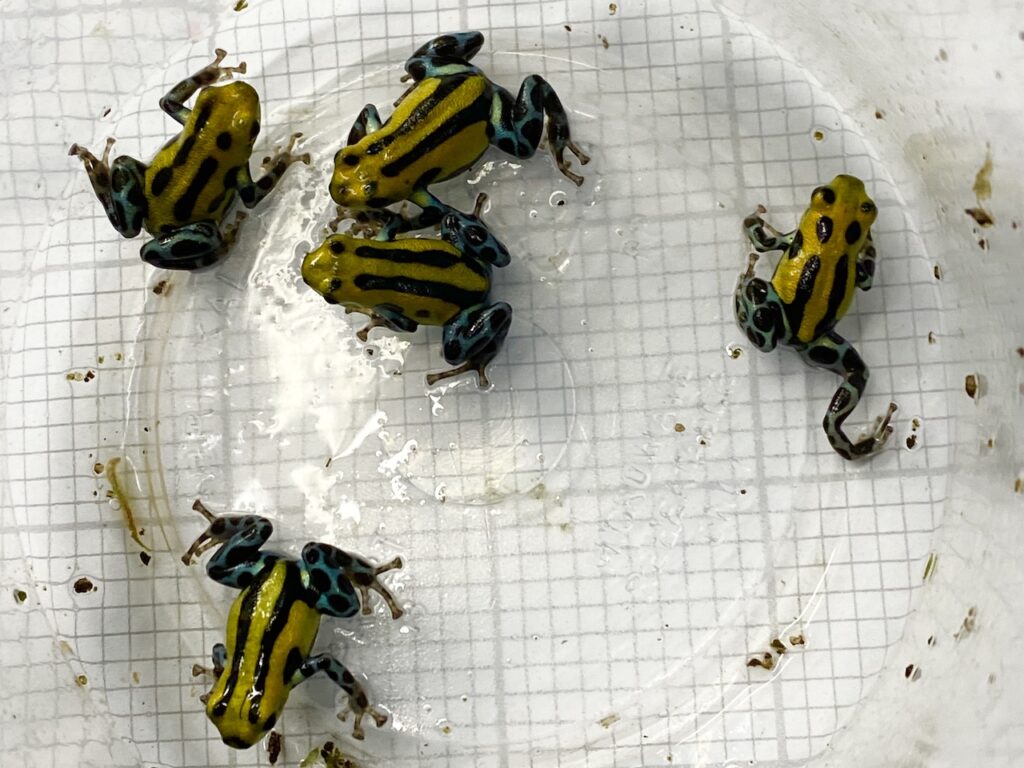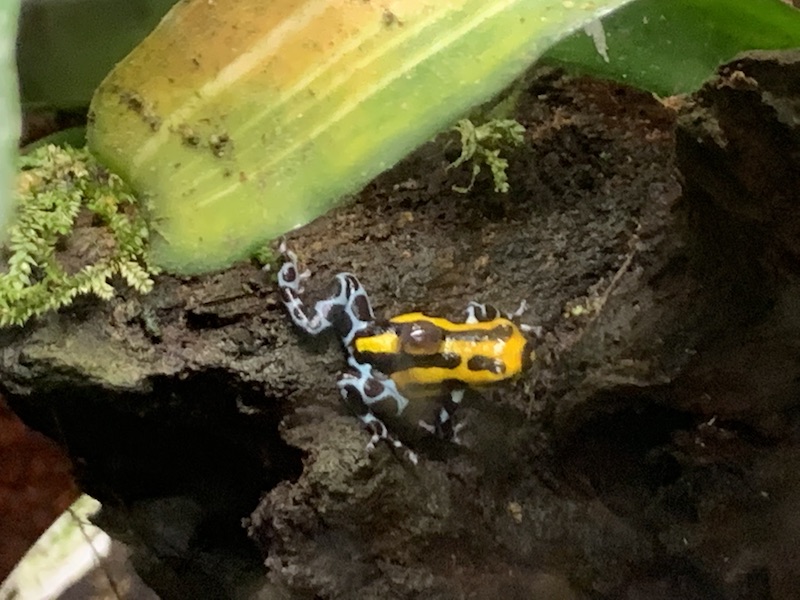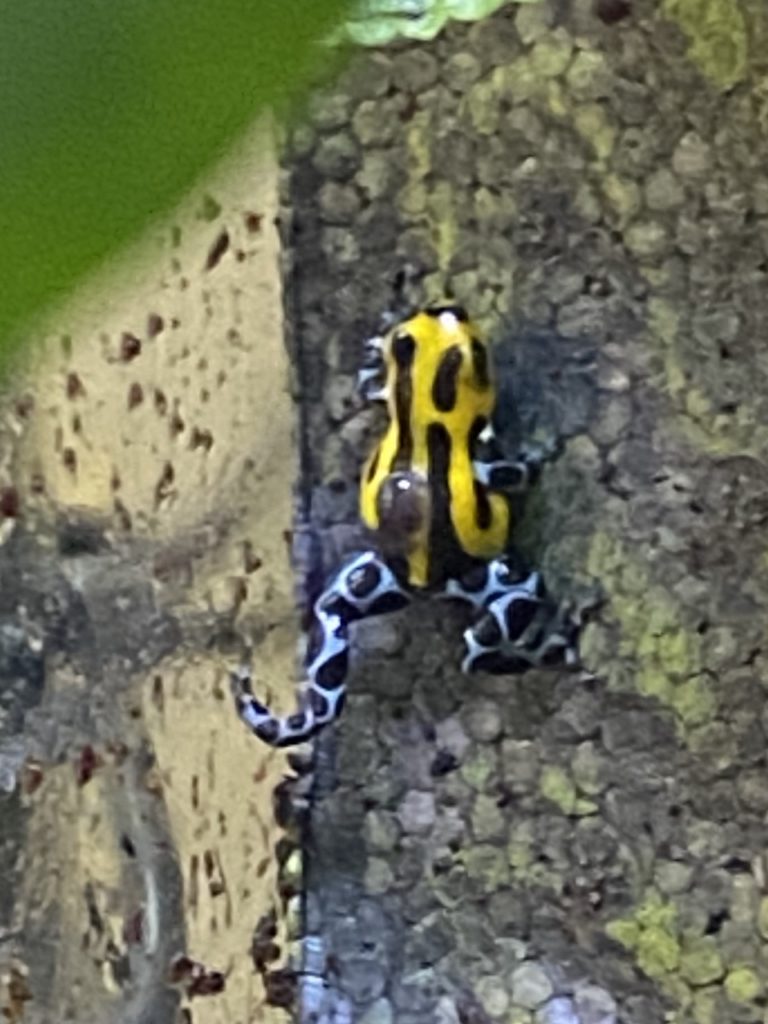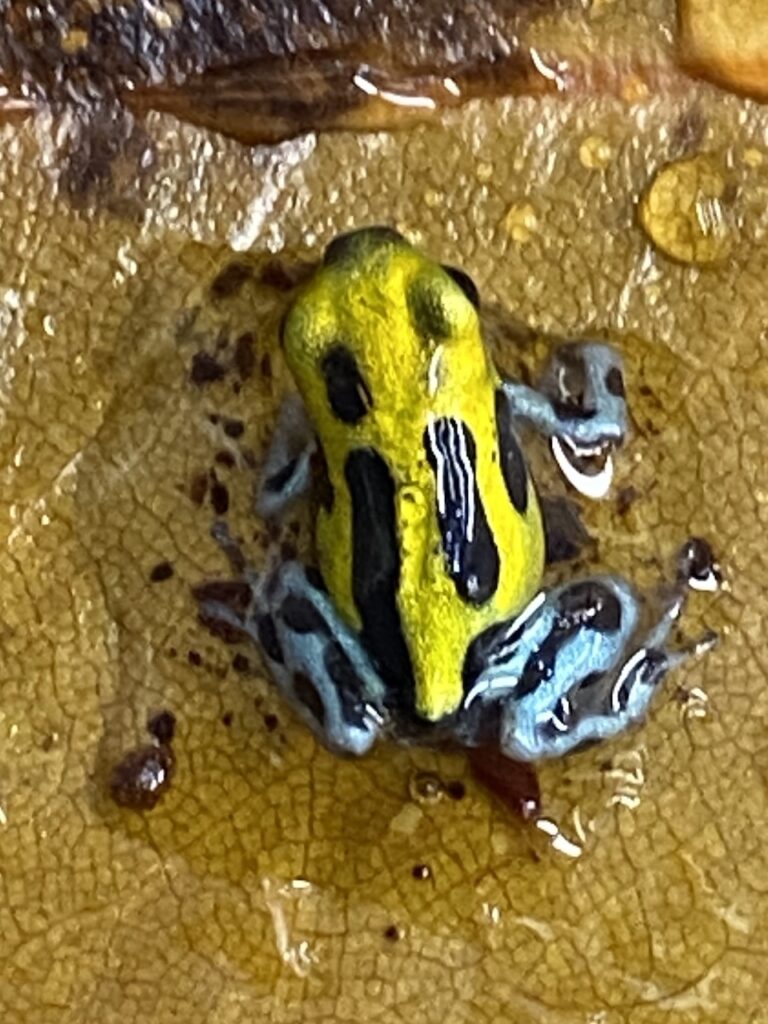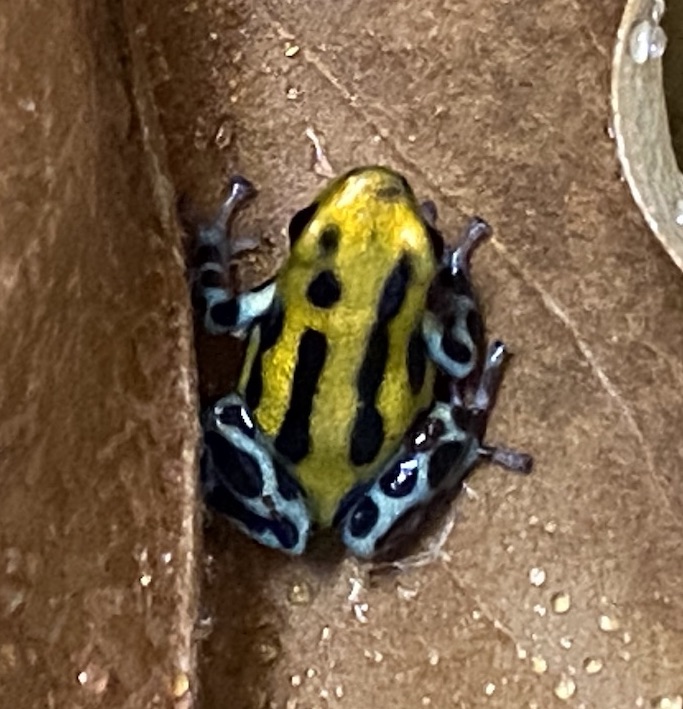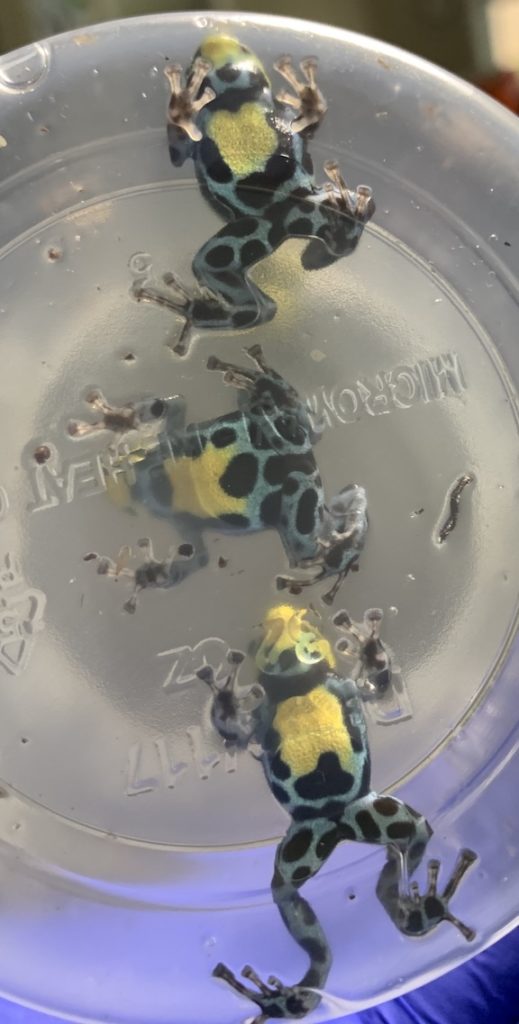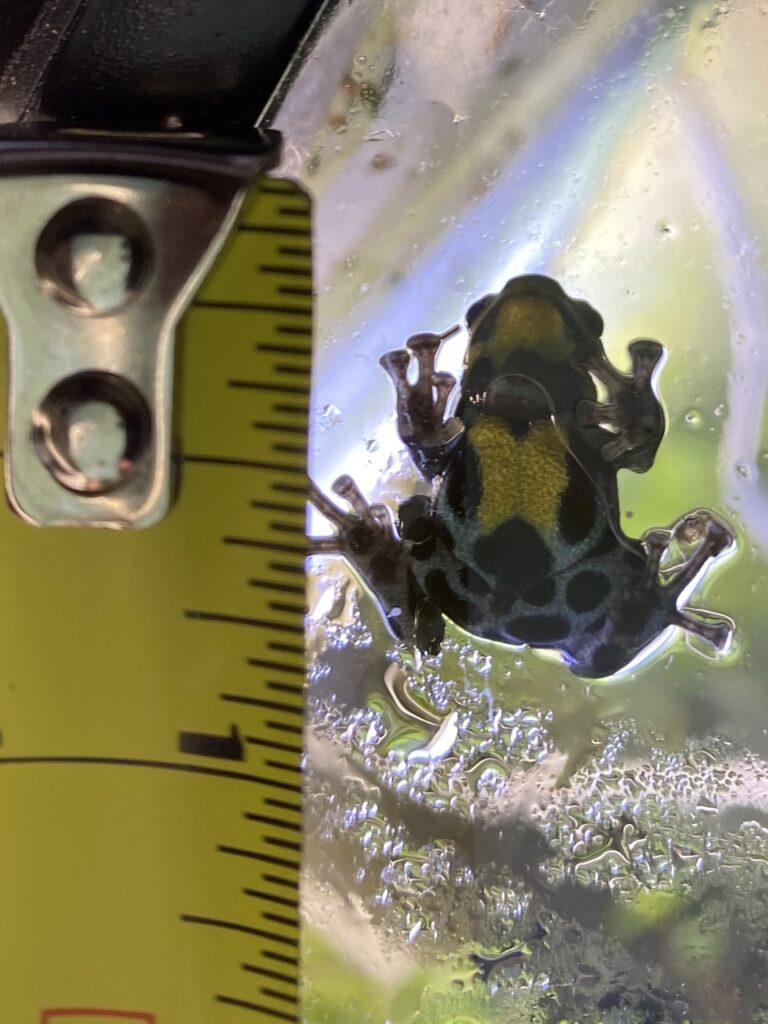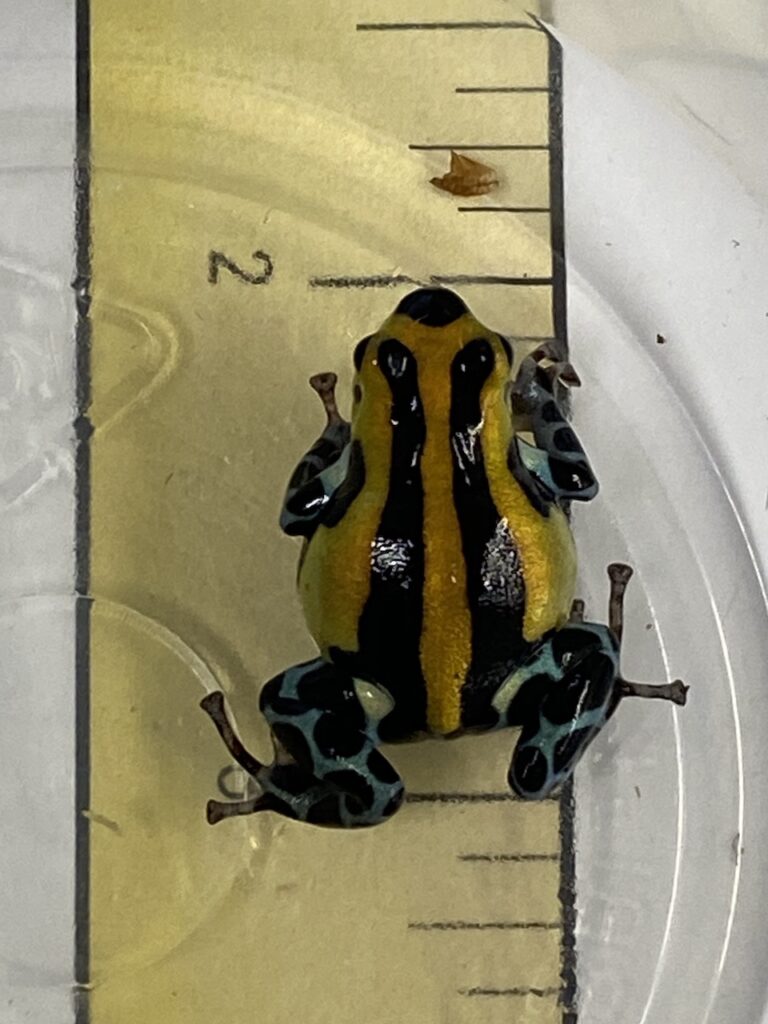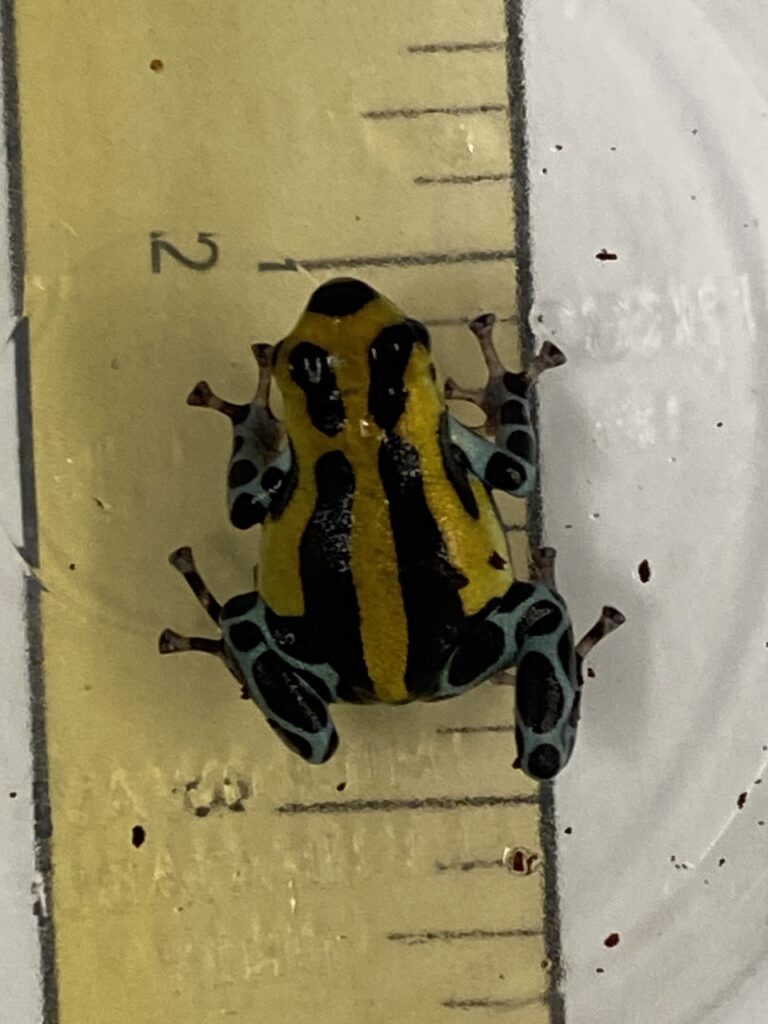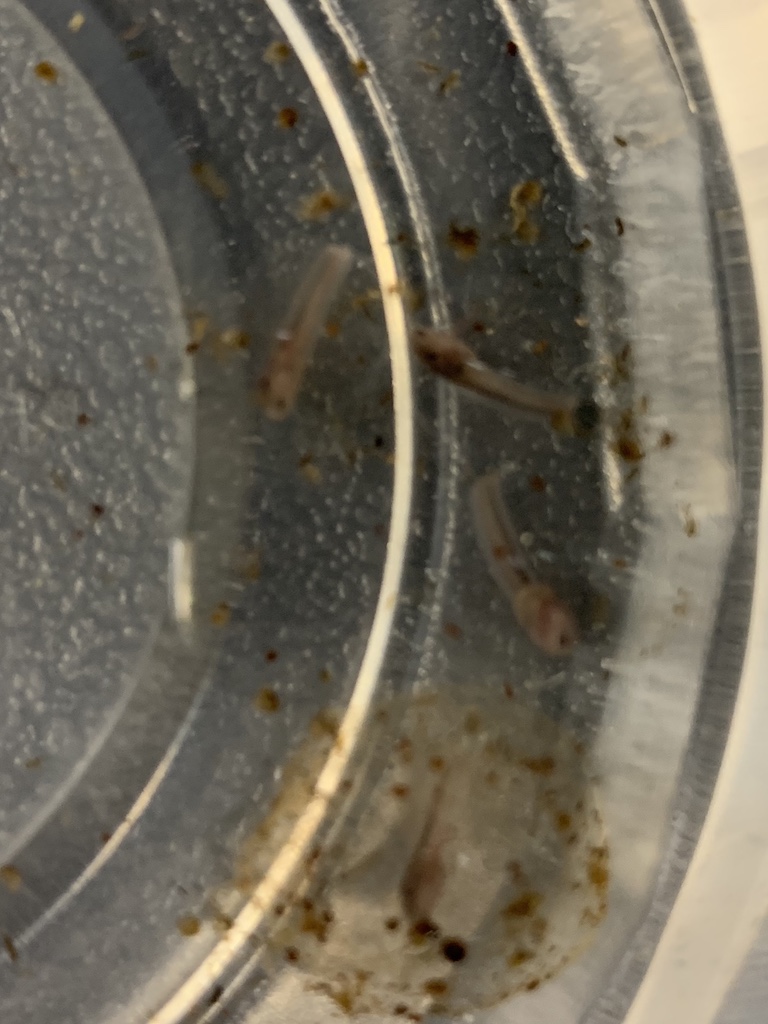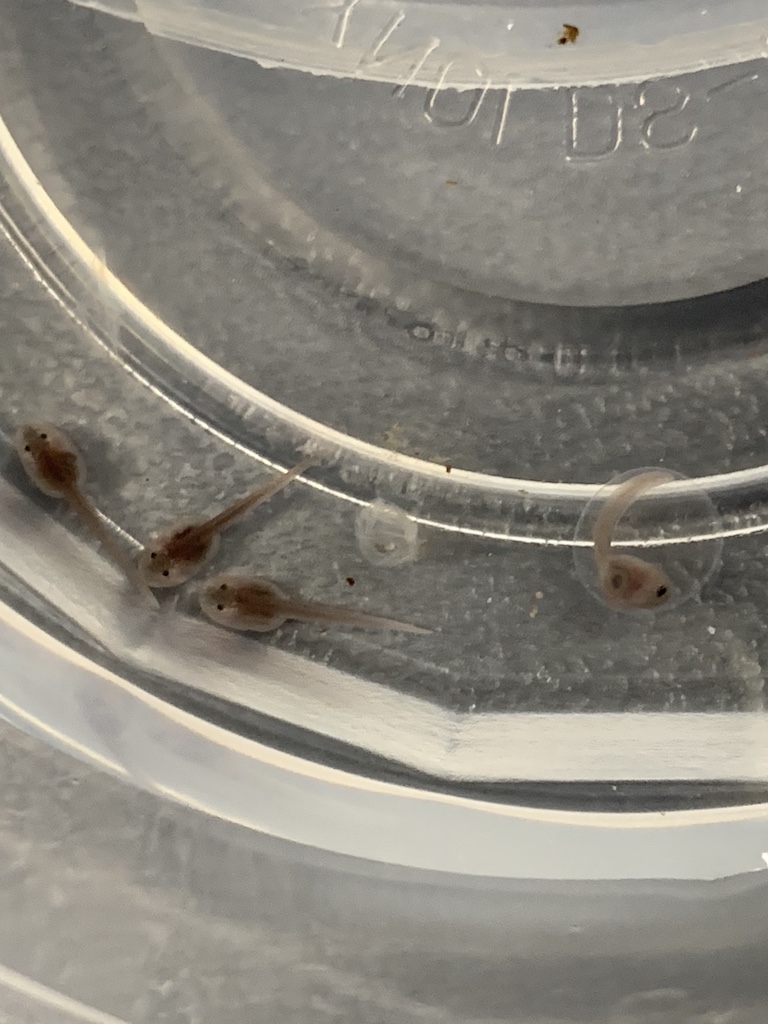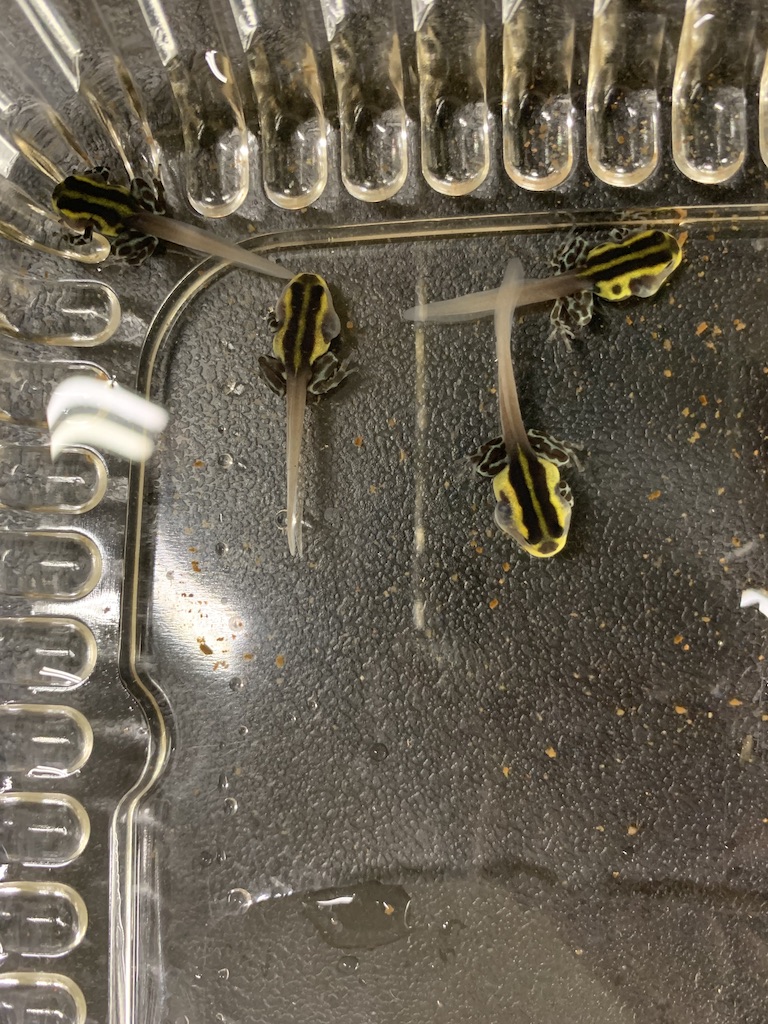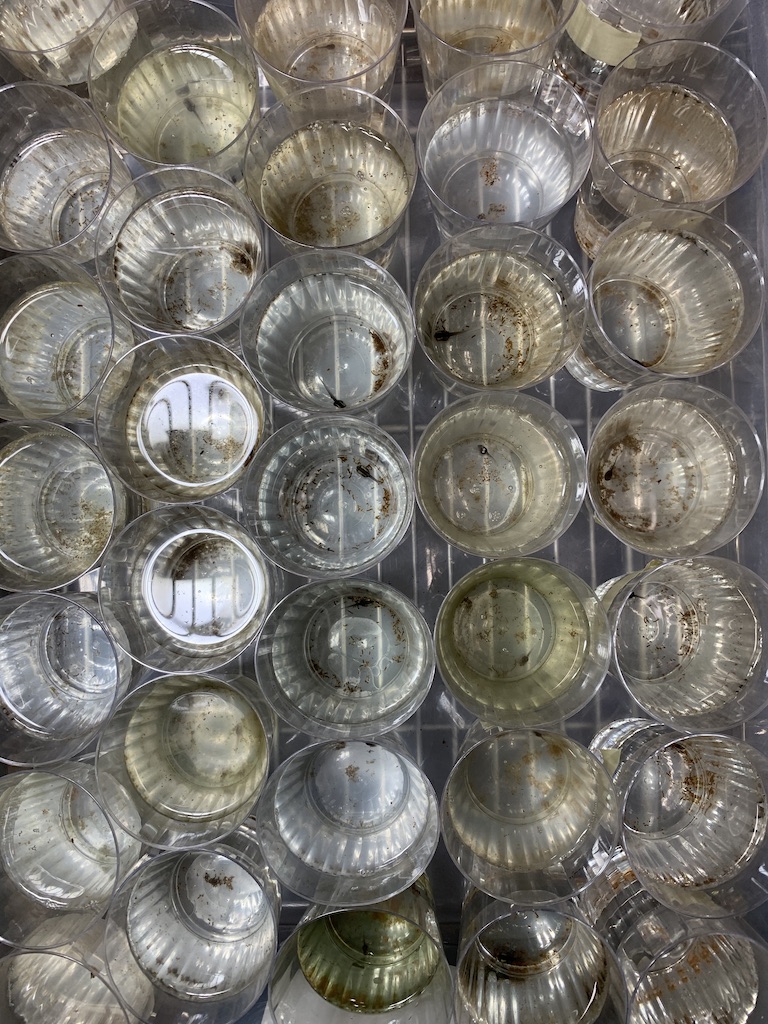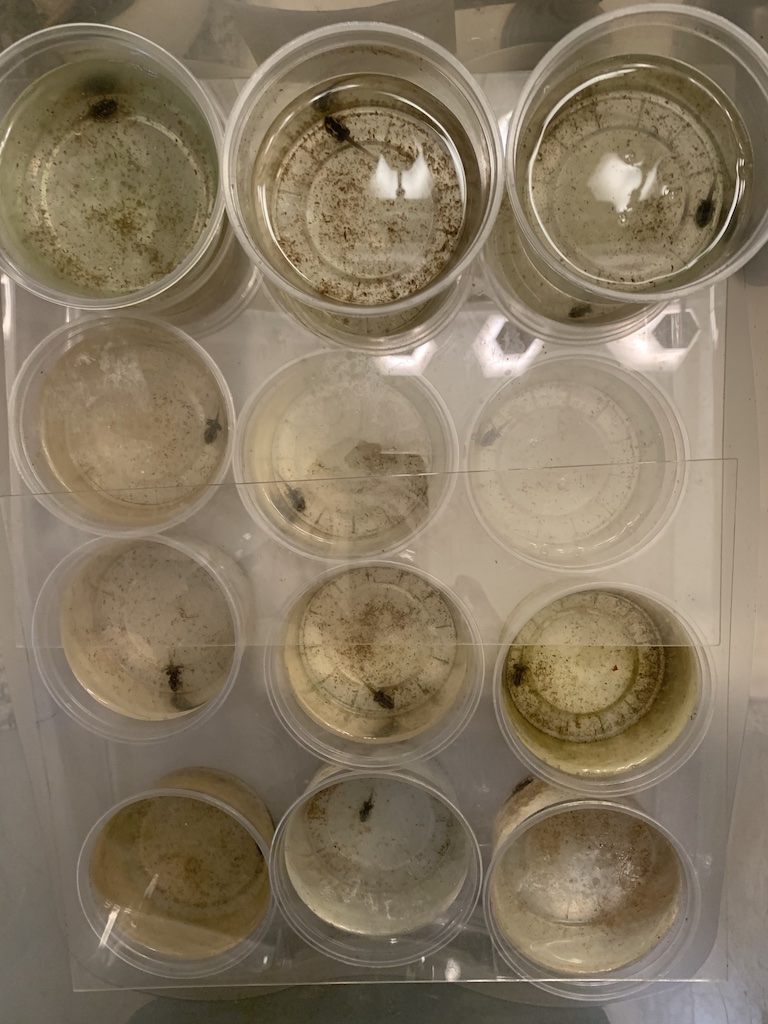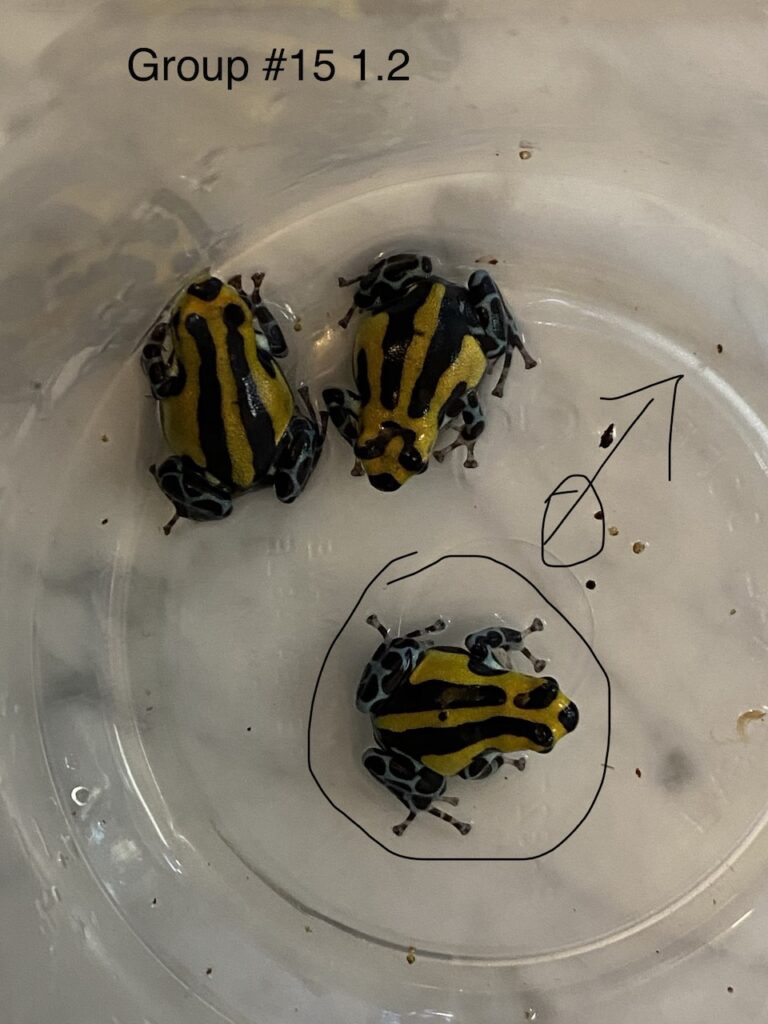This species is well known as R. lamasi “standard” or “highland” in the hobby. More recently, it has being renamed as R. sirensis “highland” or “Tingo Maria”. Because of its striking yellow and blue color, it is easily one of the favorites among dart frog hobbyists. It is still very rare and considered hard to breed compared to other species, even though it has been in the hobby for over 20 years. There are 3 other morphs of D. sirensis that I have worked with in the past, namely the “green legged”, “orange” and “Pachitea Yellow or Panguana” morph. The offspring of the R. lamasi “Tingo Maria” displays variations on their back. My stock is from a more recent European’s import and they are prolific breeders. They are very active in the morning and can be seen frequently in front of the vivarium. Some of them can be bold at times, allowing me to take a very close up shot of them in the vivarium. The frog more frequently has two parallel unbroken black lines. Occasionally, one of this line is broken at one point around the neck and in rarer cases, there is more yellow on the back than normal due to thiner black lines and multiple break points or partial disappearance of the lines. In rarer occasion, I have seen frog with completely yellow snout. The photo below shows variations on the frogs’ back.
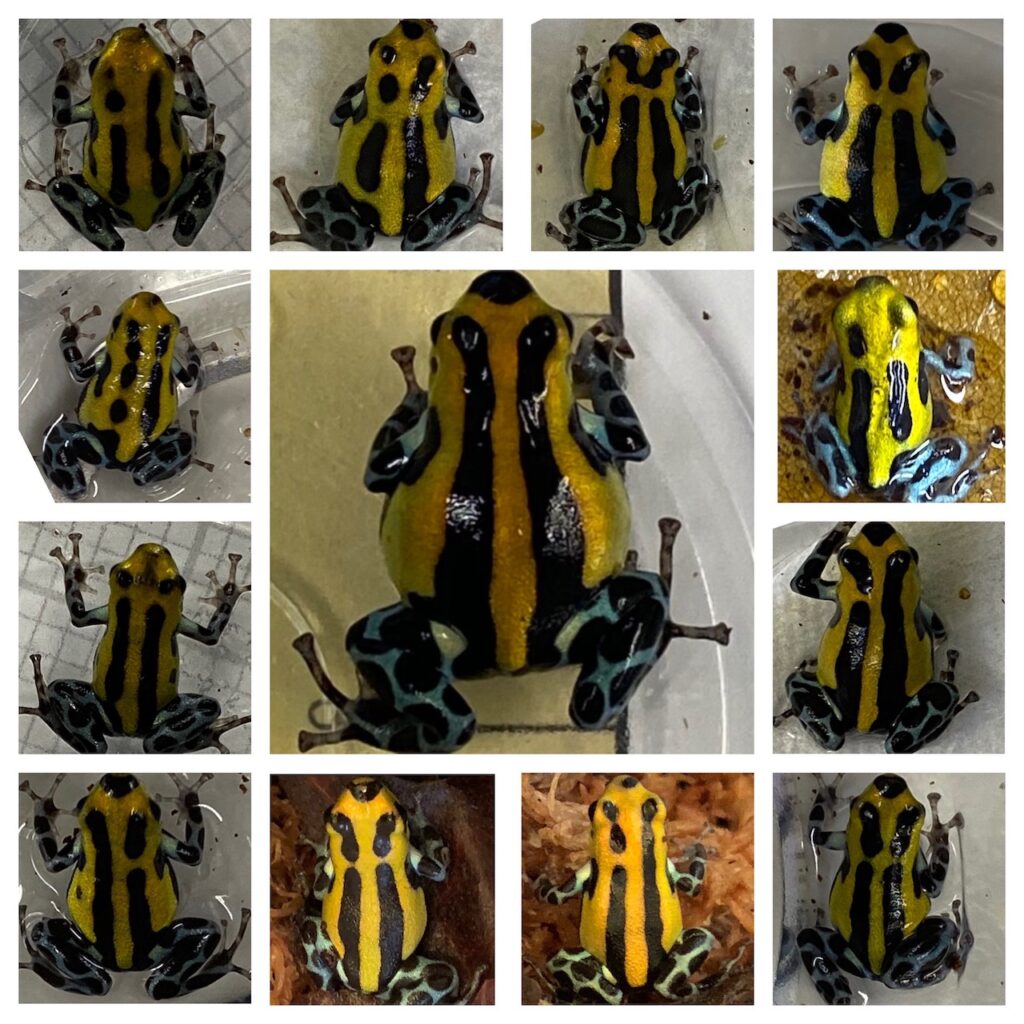
The center frog is the standard highland sirensis while all the others are rarer variants, representing less than 10% of the offspring.
Each frog has a unique underbelly and throat with a tricolor of yellow, black and blue. No two frogs has the same pattern and is just like their fingerprint!
My F1 generation are ready to breed by 5-6 months old and starts to produce fertilized eggs by 6-7 months. With good diet in the tadpole stage, when they morphed into froglets, their size easily approach their parents (P1 generation) (9/16 to 5/8 inches) and when they reached adulthood, their size is usually from 3/4 to 1 inch. My F2 offsprings came from F1 parents of only 6 months old and they are as robust as my F1 in terms of growth! I plan to breed these F2 offsprings to get the F3 offsprings soon! They often lay eggs in the canister, on the wall of the tanks or even on the leaf litter on the ground, take good care of the tadpoles and consistently transport them into the small pond in the terrarium. Sometimes, I would find several tadpoles in the pond. The development from eggs to tadpole involves multiple stages of development and takes about 10 weeks. The time from fertilized eggs to newly hatched tadpoles is 14 days and the time from hatched tadpoles to froglets is under 2 months. The record number of eggs in a clutch is ten from a single female of my F1 generation. The P1 parent usually lays 3-4 eggs in a clutch, which is typical for this species. Surprisingly with this particular group of frogs, I have not seen a single case of spindly leg syndrome (SLS) from the tadpoles.
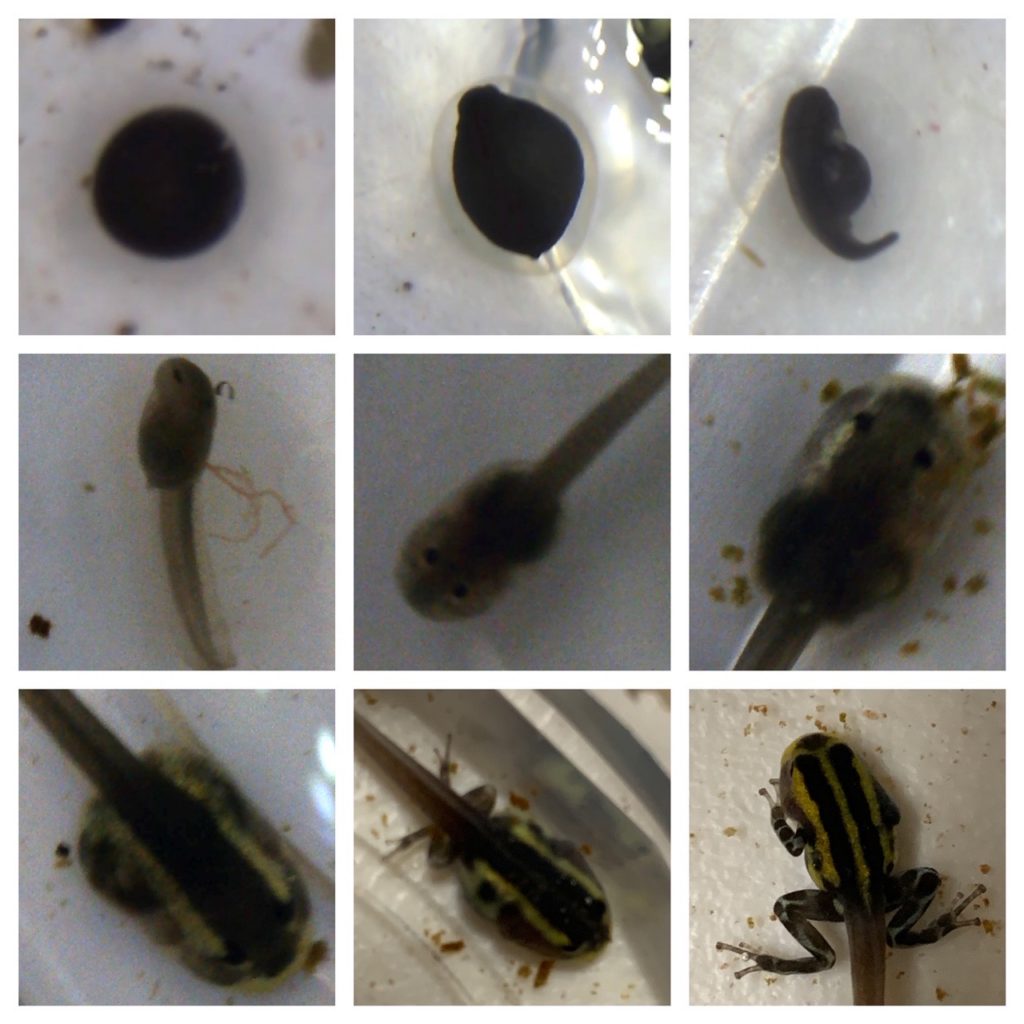
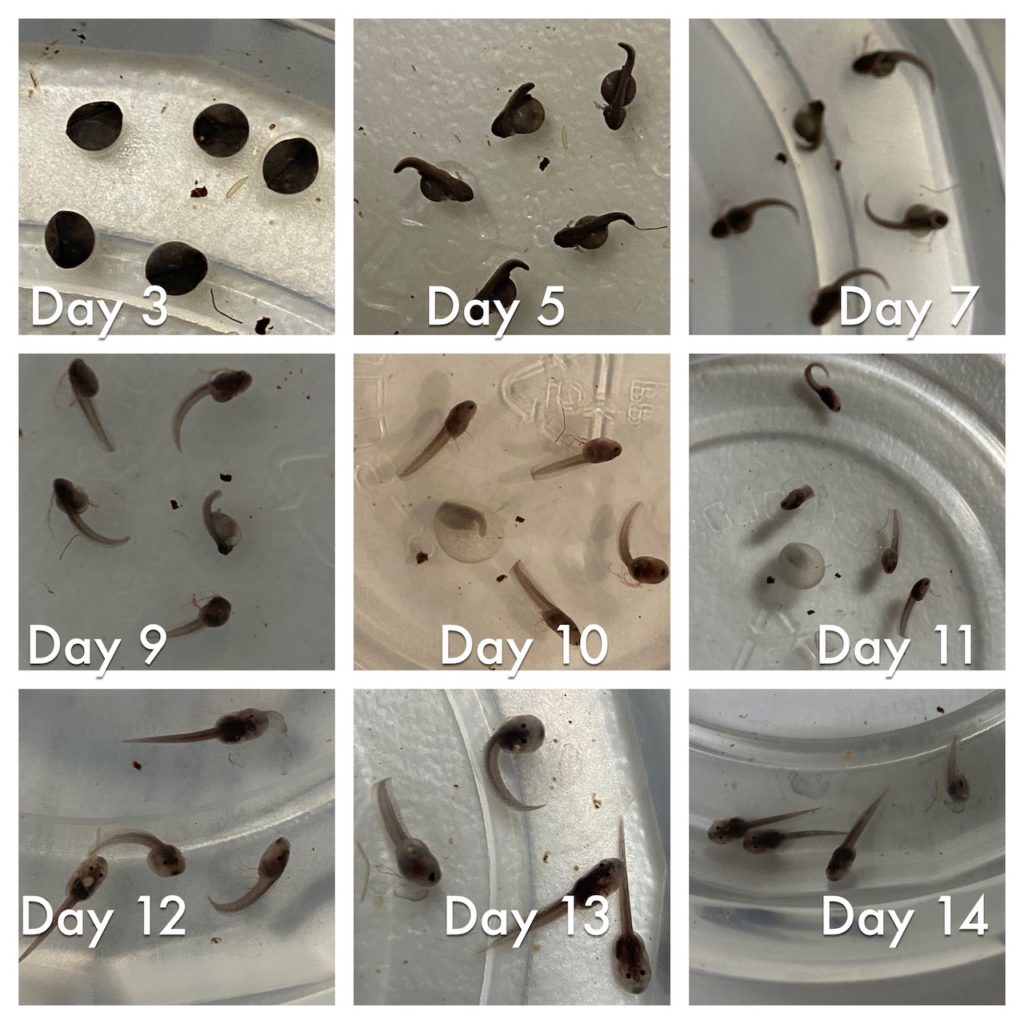
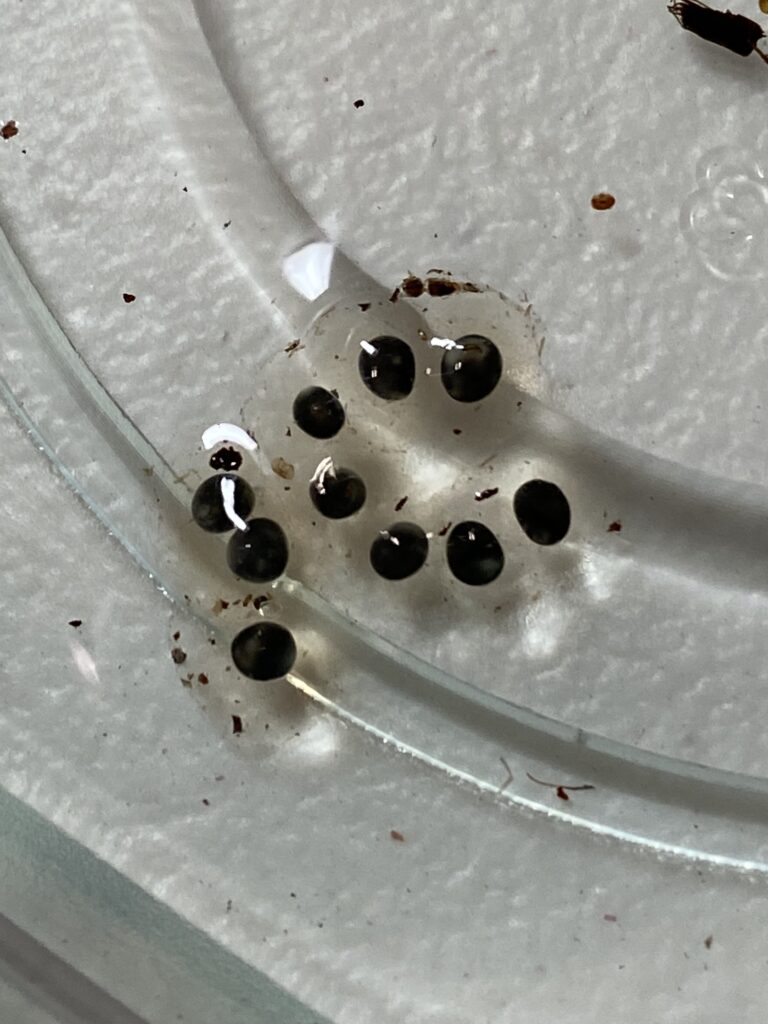
A record of 10 eggs laid by a female of a proven pair! 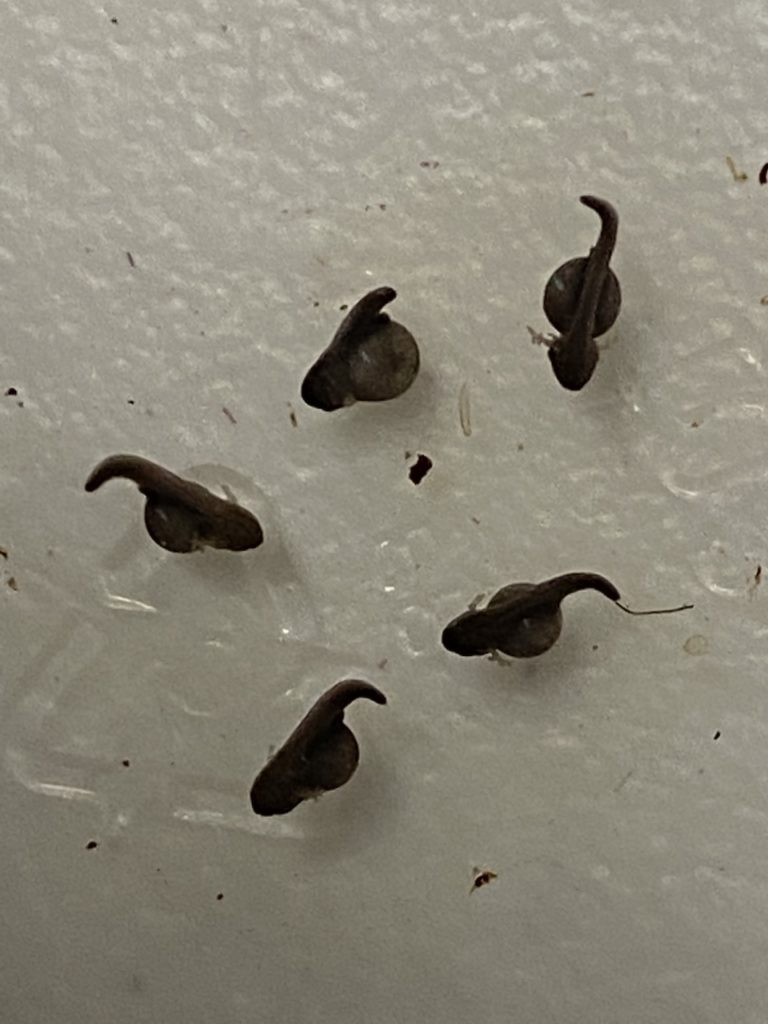
5 eggs developing into tadpoles!
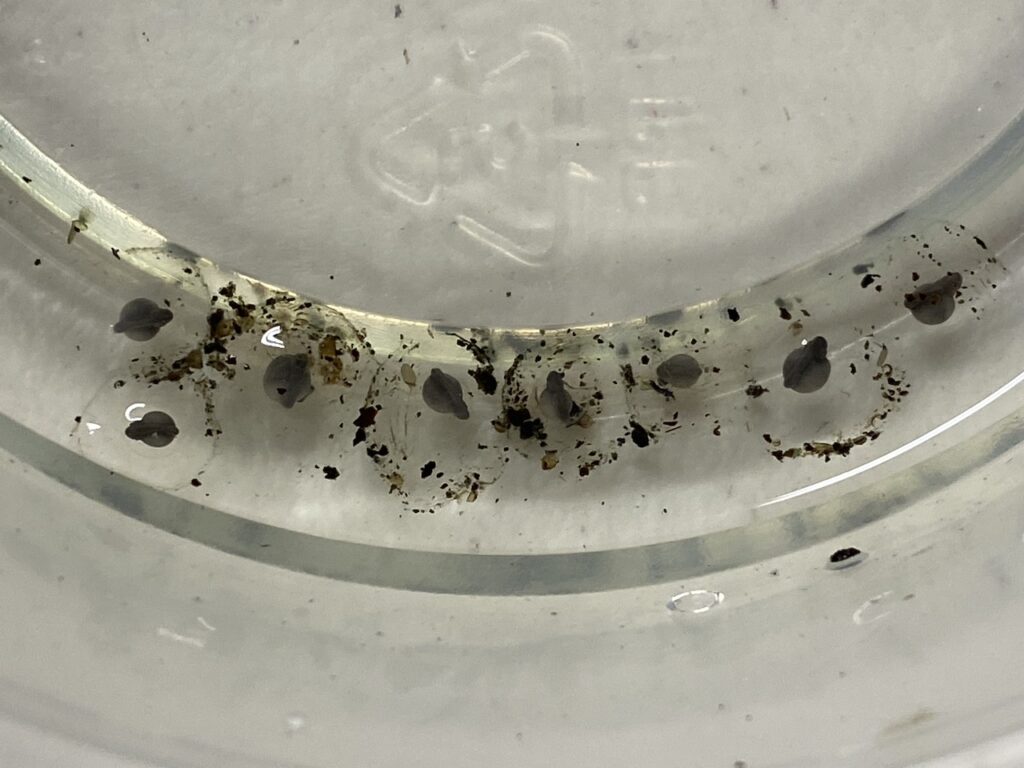

Newly morphed froglets – tiny and cute!
Sexing them can sometimes be tricky. While the males then to be smaller, they can be really chubby and sometimes just a tad smaller than the females which are almost always bigger and fatter. I have successfully paired quite a few of these. The only way to prove a pair is when you put them together, they laid eggs! Below are photos of the 9 proven pairs I put together that have laid eggs. Some pairs have obvious differences in size while others do not. I have also successfully keep and breed from trio of these frogs (1 male + 2 females).
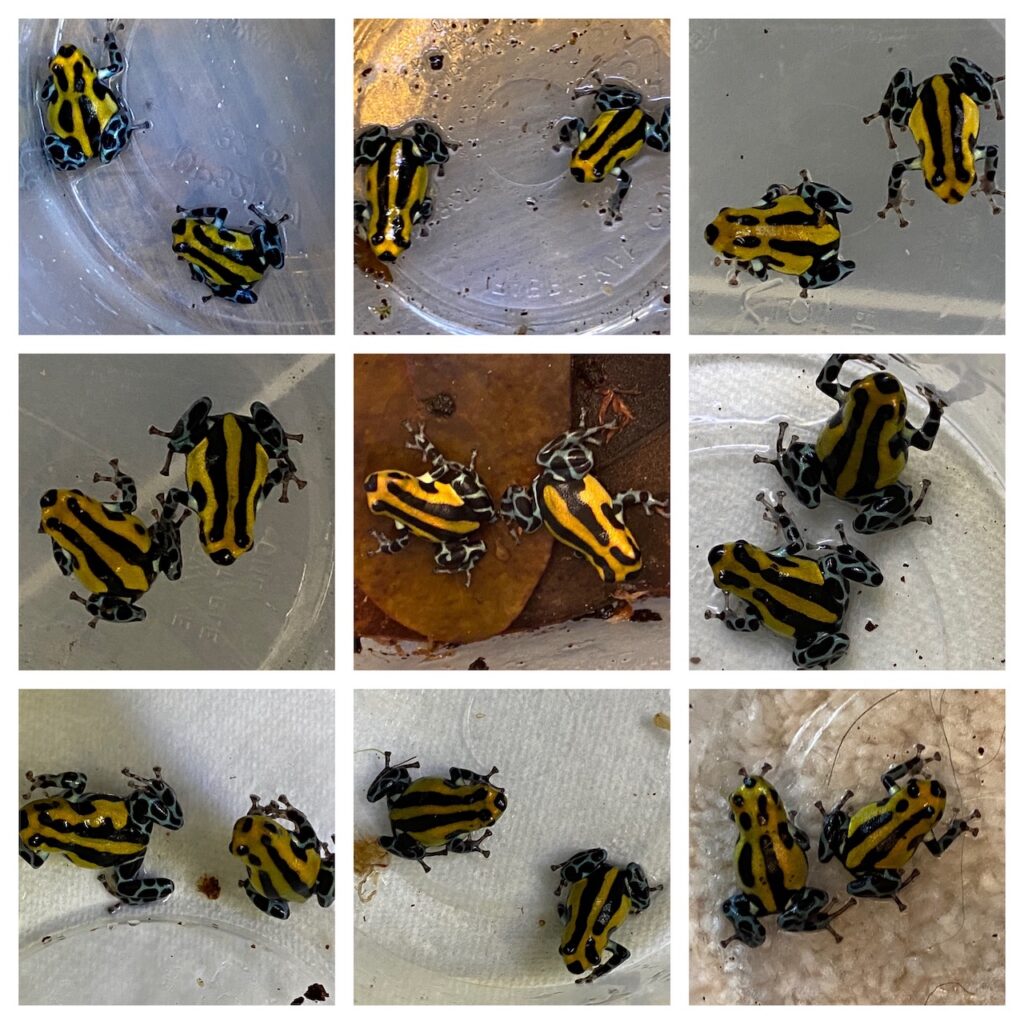
While most frogs have black ring around their snout, some offsprings lacks the black ring and have yellow snout. I have isolated quite a few of these variants. The photos below are some of the frogs that have yellow snout!
